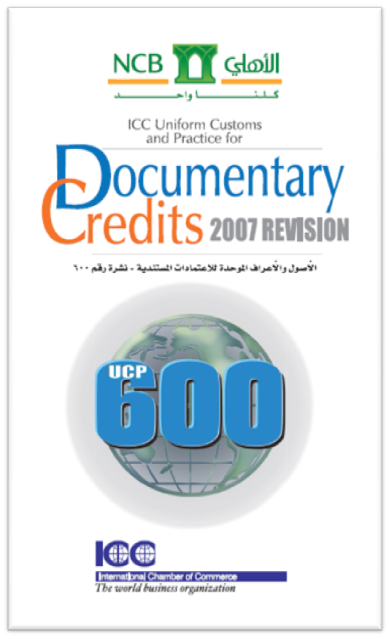Logo Maker 2.11 Build210 By Djeck there. UCP 600 Introduction If you are an exporter and you make use of Letters of Credit (L/Cs), then you will need to familiarise yourself with the UCP 600 set of guidelines. Indeed, if you are anyone involved in international trade, then you should learn more about UCP 600. UCP stands for Uniform Customs and Practice and the UCP 600 is the latest set of standards that came into effect on 1 July 2007. The official title is: Uniform Customs and Practices for Documentary Credits, ICC Publication Number 600. Ground Control 2 Patch 1.0.0.8 Deutsch. UCP 600 provides a set of internationally recognised set of rules for governing the use of documentary credits (L/Cs) and was developed under the auspices of the International Chamber of Commerce (ICC) with input coming from a wide range of stakeholders.
Marvel Vs. Dc Comics Demo On Pc on this page. The history of the UCP UCP 600 is the latest in a long history of sets of guidelines, the first being published in 1933. These rules were then revised by the ICC in 1951, 1962, 1974, 1983 and 1993.


Assistive Technology Information. AT is any item, piece of equipment, or product that is used to increase, maintain, or improve the functional capabilities of. You can download software for your Universal Laser Systems platform here. Coastline Solutions develops and markets online international trade finance training and information services.
The UCP 500, the guidelines preceding the UCP 600, came into effect in 1994. The latest revision took more than three years for the ICC to develop. There were 15 drafts and over 5 000 comments collected from around the world. According to the ICC, the UCP 600 sets out the “modern rules for a changing world”. The UCP is utilized by bankers and commercial parties in more than 175 countries. Currently some 11-15% of international trade utilises L/Cs, totaling more than a trillion US dollars per annum. Who should know more about UCP 600?
Anyone that is involved in or with international trade transactions, but especially documentary credits (L/Cs) should make the effort to familiarise themselves with UCP 600. These individuals include: • Importers (L/C applicants) • Exporters (L/C beneficiaries) • Freight forwarders • Customs brokers • International carriers such as shipping lines and airlines • International bankers • International consultants • International trade attorneys • Compliance professionals • Anyone interested in networking and learning more about UCP 600 Why change? Historically, the ICC revises the UCP every 10 years or so to incorporate changes in international business practice and global logistics, as well as to incorporate modern technologies such as the Internet. What is more, the UCP 500 still contained various discrepancies that hampered the smooth operation of documentary credit transactions. The problem became so bad with the UCP 500, that between 70% and 80% of L/Cs were being rejected the first time round.
Because of various interpretations being applied to the UCP 500 guidelines and given the enquiries being received by the ICC, the numerous lawsuits coming into being, and the practice of including disclaimers in bills of lading in recent years thereby affecting the application of the UCP 500 rules, it become clear that change was necessary. What are the major changes? The ICC summarises the UCP 600 changes as: • A leaner set of rules, with 39 articles rather than the 49 articles of UCP 500; • A new section of 'Definitions,' containing terms such as 'honour' and negotiation'; • A replacement of the term 'reasonable time' with a definite number of days for examining and determining compliance of documents; • A new provision concerning addresses of the beneficiary and the applicant; • An expanded discussion of 'original documents'; • Re-drafted transport articles aimed as resolving confusion over the identification of carriers and agents. More specifically? The UCP is commonly viewed from the perspective of how it differs from the previous set of rules, namely the UCP 500. From this perspective, the changes can be described as follows: • Article 2: Definitions The new definitions section can be found under article 2.
This defines terms such as ‘honour’; what it means to honour a letter of credit, ‘confirmation’, and ‘negotiation’. Interpretations can be found under article 3. This deals with issues such as the requirement for a document to be legalised/visaed or certified, what constitutes a valid signature, and seeks to determine how vague terms such as ‘on or about’ and ‘first half’ (of the month) should be uniformly interpreted.
• Article 10: Amending or cancelling a letter of credit The new article 10 sets out the requirements for amending or cancelling a letter of credit. A letter of credit cannot be amended or cancelled without the agreement of the issuing bank, confirming bank (if any) and the beneficiary. The original terms and conditions will remain in force for the beneficiary until the beneficiary communicates acceptance of the amendment to the advising bank.
New Pages
- Bank Of America Visa Activation Phone Number
- Billy Joel Tomorrow Is Today Pdf: Full Version Software
- Kazrog Llc Recabinet 3
- Download Fsx Milviz Beechcraft Baron B 55 Exe
- Shad Flying Colours Zip
- Bambi Surioara Fisierul Meu
- Foomatic Printer Drivers Mac
- Converting Midi Files To Patch Files
- Flac Good Vibrations